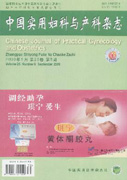|
Management of persistent high-risk HPV infection.
ZHANG Yu-min,ZHANG Shi-qian
2020, 36(7):
588-592.
DOI: 10.19538/j.fk2020070104
Persistent high-risk human papilloma virus (HPV) infection is a necessary condition for cervical precancerous lesions and cervical cancer.However,the definition of persistent high-risk HPV infection is not uniform,which results in varying infection rate.Although guidelines for cervical cancer screening improve gradually,screening and management measures for persistent high-risk HPV infections have not been systematically discussed.As for patients with persistent high-risk HPV infections without histological lesions,it remains a problem whether it should be treated and how it should be treated in clinical practice.This article aims to search the published literature,reviewing the definition,infection rate,management measures and prevention of persistent high-risk HPV infections.
|

